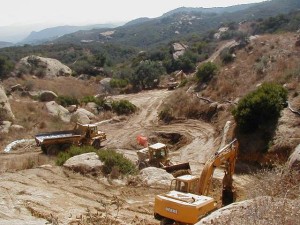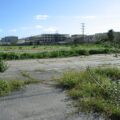By Michael Collins
LA Weekly – December 23, 1998

Among the more creative reasons Department of Energy (DOE) officials gave in explaining why the department chose to reward Boeing, the parent company of those who created the gooey nuclear mess in the first place, were the “unique and special circumstances possessed by Boeing.” Apparently, the aerospace giant’s special qualifications include its access to the sprawling site that spans the mountains between the Simi and San Fernando valleys, as well as its “infrastructural support.”
The DOE’s list of reasons is doing little, however, to win over activists who have been fighting to ensure quality control during the cleanup. “This is the proverbial fox guarding the chicken coop,” said Joe Lyou of the Committee to Bridge the Gap, one of the groups urging stricter standards. “The money should be given to a truly independent third party that can be trusted to do the job right.” Senator Dianne Feinstein stated in the DOE press release that while she welcomed the funding, she regretted that there weren’t yet resources allocated to fund additional health studies of the communities surrounding the site.
As for the cost of cleaning up the mess, the original 1996 DOE estimate came in at $351 million. Now that figure has shrunk to a little over $200 million, according to the DOE’s Roger Liddle. He says the drop in price shouldn’t be confused with a drop in quality. “The thing I don’t want anybody to imply is that we are somehow cutting money out of this and shortchanging the cleanup,” said Liddle.
But pollutant-oversight analysts aren’t buying the agency’s explanation that new and improved technology, coupled with revamped estimates, have lowered cleanup costs. “The reasons for the reduced costs is that they are going to leave more contamination behind,” said Lyou. “All our protests were about the closed-door meetings with DOE and Boeing, in which DOE agreed to relax the cleanup standards to save money.”
27 Years of Award-Winning SSFL/Rocketdyne Reporting
1998 – 2025












Recent Comments